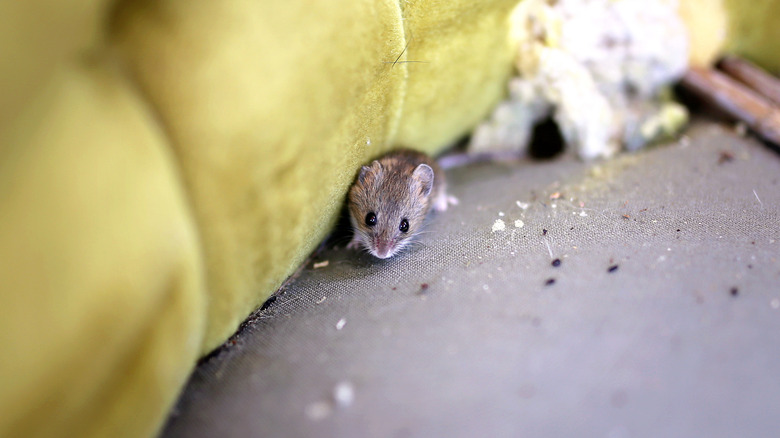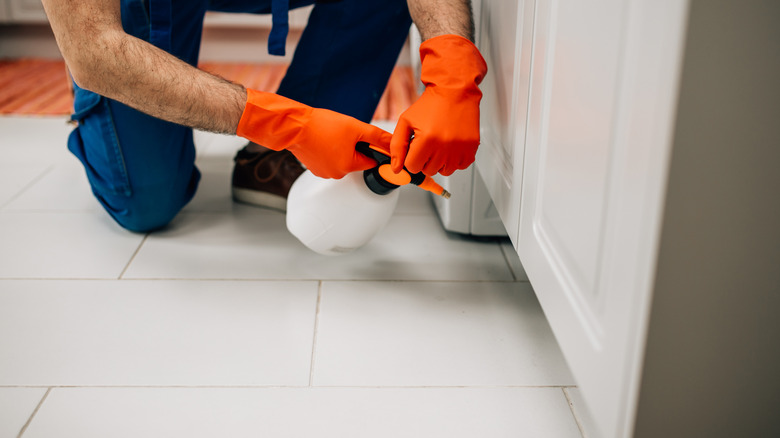Clean Up Gross Mouse Droppings With This Common Household Staple
If you're dealing with a rat or mouse problem in your home, chances are you've encountered mouse droppings in the most unexpected places, like inside the cabinets, under furniture, on the carpet, and in the attic. These droppings are tiny, range from brown to black, and have a circular grain-like texture that might look harmless initially but carry bacteria responsible for Hantavirus Pulmonary Syndrome (HPS) and salmonella infection, among other diseases. This makes it essential to eliminate them from your living quarters as soon as you spot them. Thankfully, you can use a common household staple—white vinegar—to clean up gross mouse droppings.
While you might be tempted to pick them up and toss them out or suck them up using your powerful vacuum, don't give in to the temptation, as the action will stir the surrounding air and cause the disease-causing germs to pollute the oxygen you inhale warns the Centers for Disease Control and Prevention. So, don't take any chances. It's not safe to vacuum the droppings even if you've got a vacuum with a HEPA filter. Similarly, don't touch the deposits with your bare hands to avoid accidental transmission.
How to use white vinegar to clean up mouse droppings
White vinegar is an ideal cleaning agent that can double up as a disinfectant in a pinch. But before you unleash your trusty weapon on the mice droppings, open the doors and windows to improve the room's ventilation, wear washable protective gloves (plastic, rubber, latex, or vinyl), and don a face mask to protect yourself from handling the disease-ridden deposits and inhaling the contaminated air. Once you're ready, combine 1½ cups of white vinegar with 1 gallon of water (basically, ensure the proportion of vinegar to water is 1:9).
Next, spray the droppings with the prepared solution and let it sit undisturbed for at least five minutes. Once the time is up, use a paper towel to scoop up the remnants, put them inside a sealable plastic bag, and promptly dump the bag in a covered trash can outside your home. Then, come back to the spot and respray the disinfecting solution to ensure the surface is free of germs. After you're done, wash the gloves thoroughly with soap and water (or a disinfectant) before pulling them off and washing your hands in a similar fashion. One word of caution: don't use this solution on natural stone surfaces since vinegar is an acid and can physically damage them.

